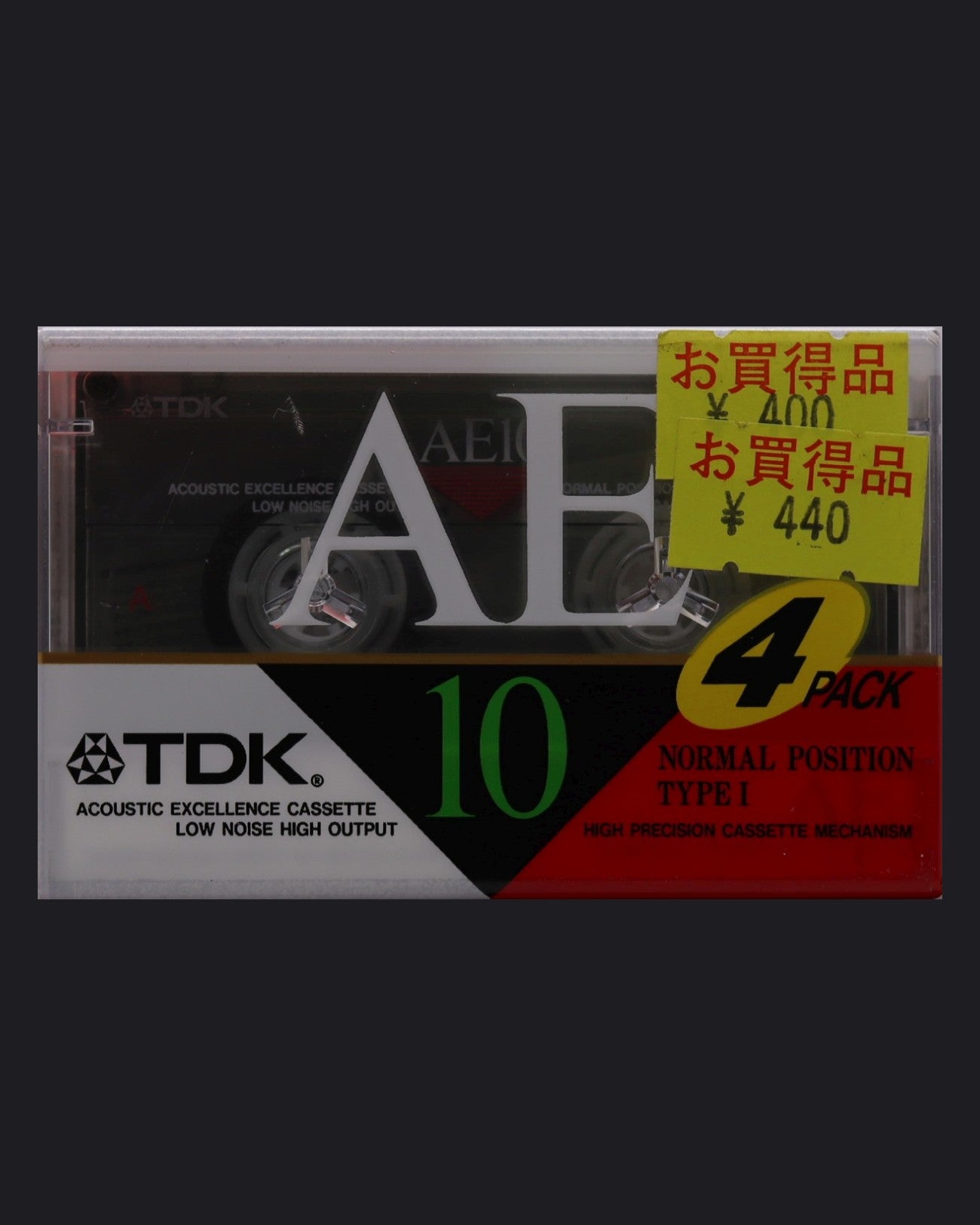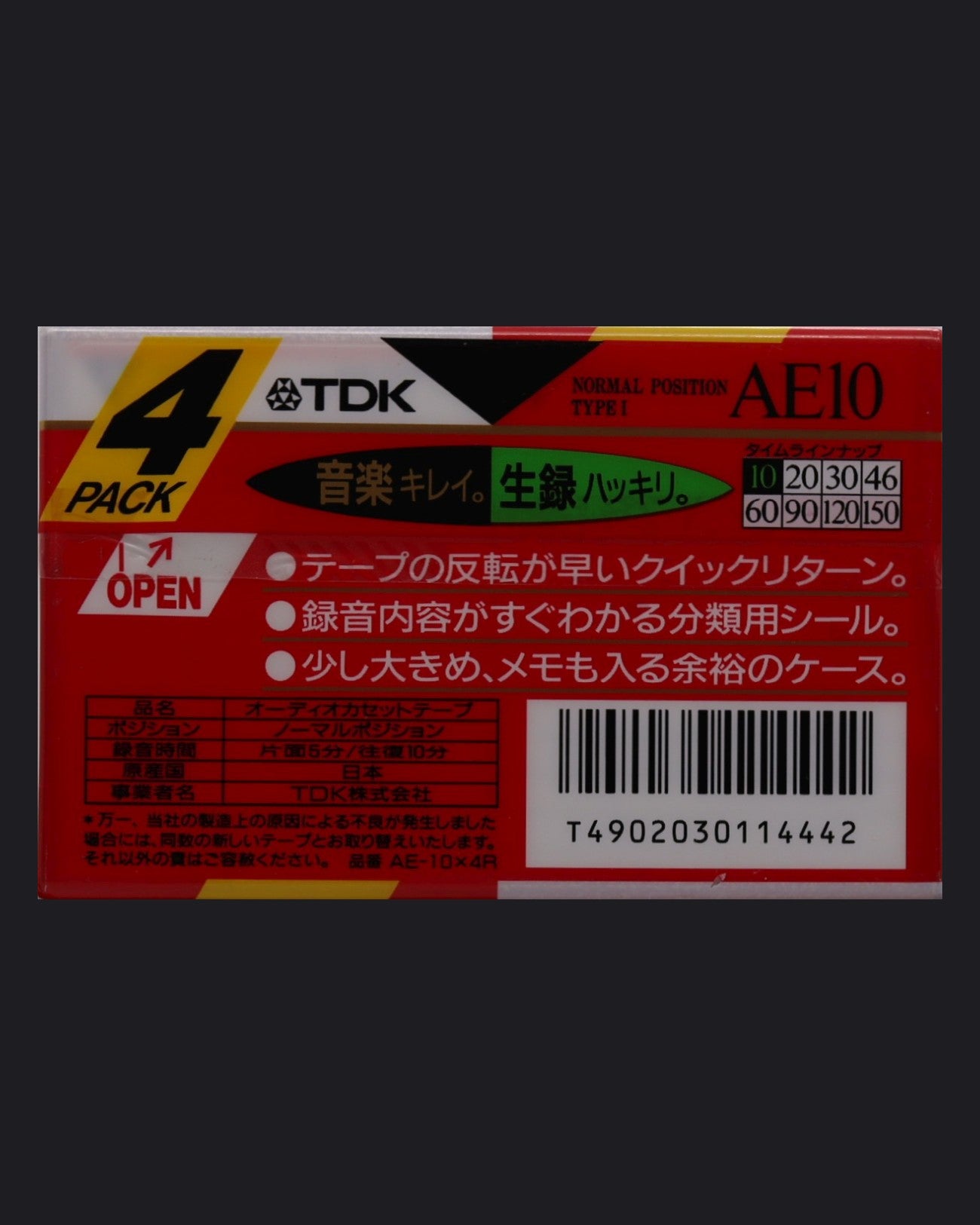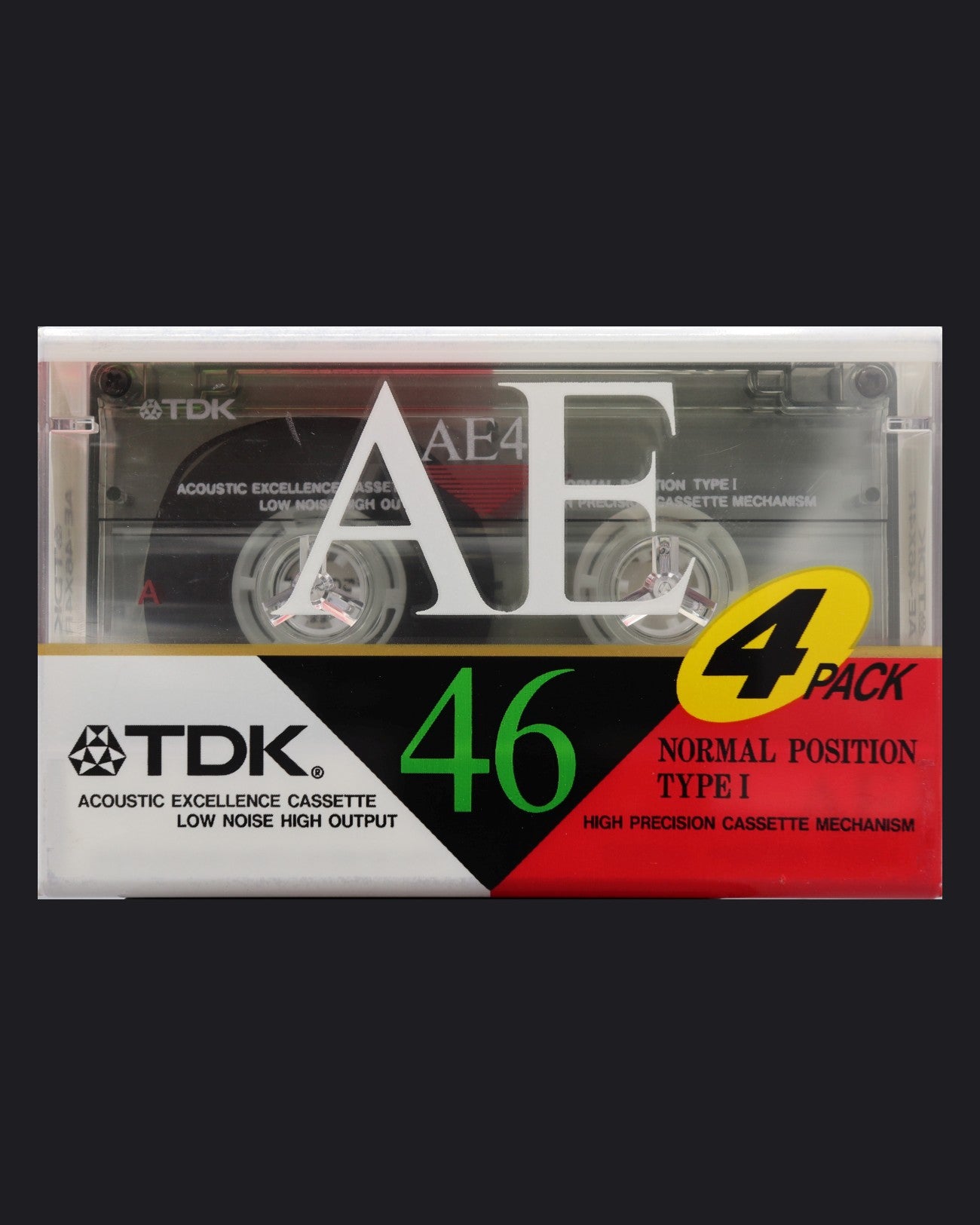TDK AE (1994-1995 JP)
TDK AE (1994-1995 JP)
Only a few left…
Couldn't load pickup availability
TDK AE (1994-1995 JP) Cassette Tape
TDK AE Cassette Description
The TDK AE (1994-1995 JP) cassette tape is a high-quality, analog magnetic tape designed for audio recording and playback. Manufactured by TDK, a renowned company in the field of magnetic materials technology, this cassette tape is engineered to provide reliable and clear audio reproduction.
TDK AE Technical Specifications
- Width: 0.15 inches (3.81 mm)
- Track Width: 1.5 mm for mono, 0.6 mm for stereo with a 0.3 mm separation
- Tape Speed: 1+7⁄8 inches per second (4.76 cm/s)
- Material: Polyester-type plastic film with a magnetic coating
- Type: IEC Type I, suitable for standard ferric oxide formulations
User Reviews
The TDK AE cassette tape has received positive feedback from users for its clear and consistent sound quality. Users appreciate its reliability and ability to record and play back audio without significant distortion. For example, Tech Review Guy noted that while the TDK AE did not have any dropouts, the sound quality was not as high as some other cassettes, but it was still a good performer.
TDK AE Key Features
- Magnetic Coating: The cassette features a magnetic coating on a polyester-type plastic film, ensuring high-quality audio reproduction.
- Stereo Recording: Capable of recording two stereo pairs of tracks or two monaural audio tracks.
- Write-Protect Notches: Includes write-protect notches to prevent accidental recording over existing content.
Improvements over Previous Generation
The TDK AE cassette tape builds upon TDK's advancements in magnetic materials technology. It uses a new type of magnetic powder with improved characteristics, which was a significant improvement over earlier cassette tapes. This new powder enabled the TDK AE to offer better sound quality and reliability compared to its predecessors.
Share






